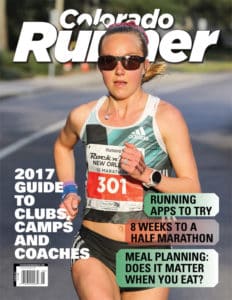Tech Trends in Running
 Gone are the days when you got dressed in cotton running clothes and headed out for a run without any clue as to what your heart rate, cadence or average pace might be. And while some runners tout the benefits of going unplugged, I think that most of us agree that some things are better with technology. Modern workout gear makes going for a long run more enjoyable than the cotton t-shirts of days gone by and various gadgets help us track our training in ways that previous generations couldn’t even imagine. But the technology changes so fast, it’s hard to keep up. So here’s a look at some of the top trends in running technology.
Gone are the days when you got dressed in cotton running clothes and headed out for a run without any clue as to what your heart rate, cadence or average pace might be. And while some runners tout the benefits of going unplugged, I think that most of us agree that some things are better with technology. Modern workout gear makes going for a long run more enjoyable than the cotton t-shirts of days gone by and various gadgets help us track our training in ways that previous generations couldn’t even imagine. But the technology changes so fast, it’s hard to keep up. So here’s a look at some of the top trends in running technology.
GPS Watches
Remember the good old days when you drove your running route in your car to try to guess about how far you went? I remember that I would have basic five and ten mile loops from my house and I would run them all year, because otherwise it was too much guess work to try figure out how far I went. Well, there’s no need for that nonsense any more. I’ve been faithfully addicted to a GPS watch for years. The first-ever Garmin Forerunner 101 was introduced in 2003. The longevity of the battery life, the multitude of features, and the brands to choose from has exploded ever since. For the price, the TomTom Spark 3 packs in a lot of features for $130. You can track GPS miles while running and also use it to count the laps you swim at the pool. On the high end, the Garmin Forerunner 630 is the go-to watch for many runners, despite the steeper price of $369. It’s reliable, accurate, and tracks extras like cadence and stride length. The Polar V800 is pricey at $500, but has some interesting features. It can not only measure your distance and speed, but also track your heart rate, even while swimming. It tracks your cadence from your wrist and offers a barometer for real time elevation changes. Suunto, Apple, and others also offer options with many newer models offering preloaded maps, points of interest, and turn-by-turn alerts.
Heart Rate Monitors
No need to wear a bulky and cumbersome strap around your chest anymore. Wrist based heart rate monitors are becoming increasingly reliable. Heart rate monitors can help everyone, from those working on weight loss to athletes trying to achieve peak performance. Fitbit, Apple and Whoop have new offerings with the ability to track sleep patterns and resting heart rate. More data and better app displays will help runners train, sleep, manage stress and hopefully, become healthier overall. The Wahoo Tickr X is priced at $99 and is so much more than a heart rate monitor. It doubles as a run tracker, works indoors and outdoors, and even counts your reps during run training. The Polar H7 Heart Rate Sensor sells for $79 and is one of the best and most accurate HRMs for running that you can buy.
Other Cool Stuff
The Lumo Run app works with a wireless sensor worn at the hip to track your running form, offering such details as braking, bouncing, tilt, stride length, rotation, and cadence. RunScribe Pro uses tiny pods that clip to your shoes to offer information on pronation, foot strike, contact time, and stance velocity. Ambiorun is another foot pod that captures similar data. Sensoria apparel sells tech-enhanced running clothing that can offer a variety of data, from running form feedback to performance metrics, like heart rate, cadence and altitude.
Happy trails!
Derek Griffiths

